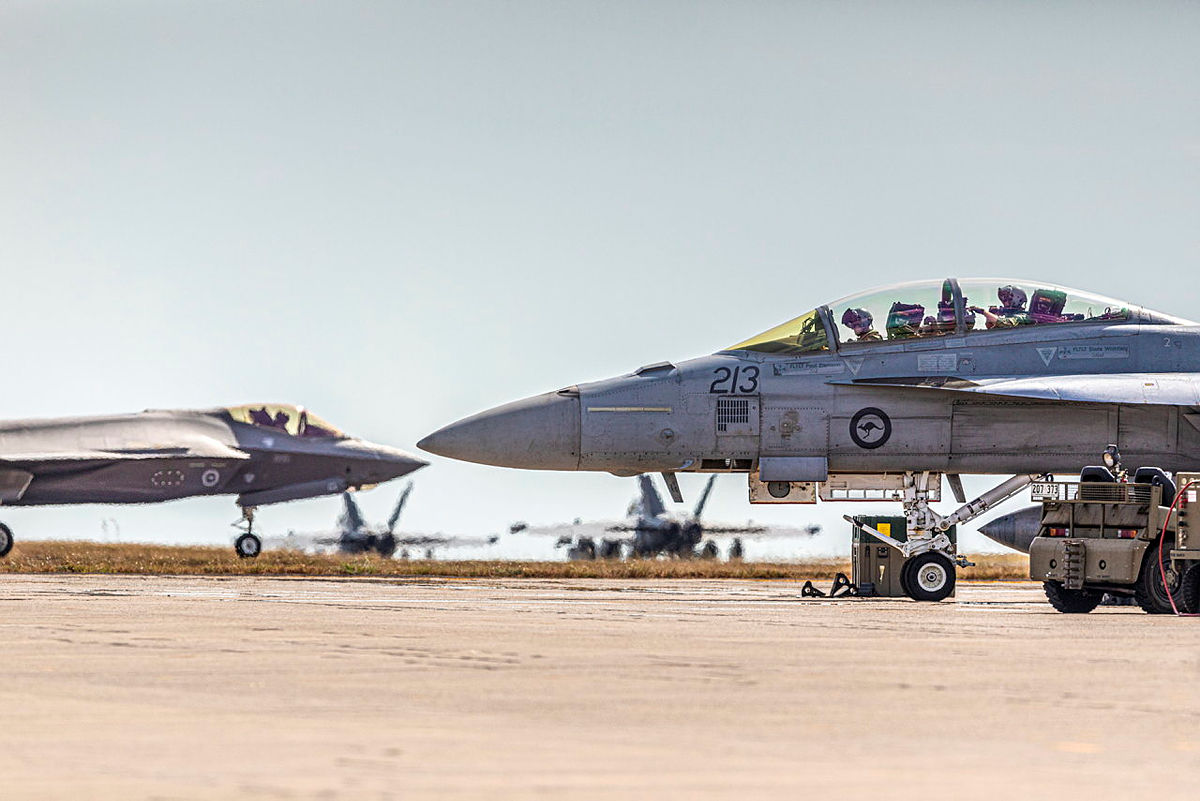Strategic review must consider how Australia’s defence capabilities work together

The government’s announcement of a
defence strategic review comes as no surprise. A review of Australia’s force posture was an election commitment it is now
following through on. The work intends to build on the 2020
defence strategic update and
force structure plan.
The logic behind the review is that Australia’s strategic circumstances have deteriorated much more quickly than anticipated in the strategic update and force structure plan, which themselves recognised the 10-year warning time before major conflict was no longer valid. The new review is required to look for opportunities to boost the Australian Defence Force’s capabilities and update both its force posture and structure to face the challenges now expected from the mid-2020s.
There have already been several
recommendations from
prominent analysts on what the review should focus on. Thus far they have been mainly about how to prioritise limited resources during a particularly difficult fiscal period by acquiring long-range strike capabilities, boosting industrial capacity to build missiles and developing an acquisition system more suited to the times Australia is facing. These are all welcome.
Excluding the separate examination of options for Australia’s acquisition of
nuclear submarines under AUKUS, these recommendations reflect a series of discrete capabilities for which the requirement to seamlessly plug into existing systems has been assumed away. Based on the narrative so far, one would be forgiven for thinking that achieving interoperability between these new capabilities and the ADF’s current materiel, as well as that of our allies and partners, is automatic. Unfortunately, that is far from the truth.
The technological dimension of interoperability requires considering the sensors, networks and communications systems enmeshed within a resilient framework to make all the ADF’s elements work effectively. A lack of such thinking from the beginning will create the types of problems faced by the US Air Force’s F-22 and F-35 fleets. While these fifth-generation aircraft remain two of the most advanced in the world, for a long time they were unable to
communicate with each other except through radio calls because they had different communication systems—a challenge that required
workarounds to overcome.
The ability to integrate with the ADF’s existing capabilities as well as achieve interoperability with allies and partners must form the cornerstone of future acquisitions. This is an important undertaking that the US and its allies have officially been working on over the past year under the
auspices of the Pentagon’s Joint All-Domain Command and Control, or JADC2, framework. The ADF has been actively participating in discussions to progress the concept, but a permanent solution remains elusive.
The desire to acquire more and newer platforms, weapons and systems makes it even more critical to get this aspect of the strategic review right from the outset. Specifically targeting the elements that must be integrated without turning the process into another JADC2 is paramount. Without integration, these new capabilities won’t deliver the desired force-multiplier effects that are likely to be at the core of the review.
The space domain and the protection of vulnerable space-based assets have so far also been neglected in the commentary. Space assets provide positioning, navigation and timing support, imagery, long-range communications, and the ability to detect and track threats from potential adversaries around the globe. They are crucial to Australia’s economic, social and national security interests. Space capabilities and space-derived information permeate all the operational domains. Space is the
domain within which capabilities such as crewed or remotely piloted aircraft and long-range missiles come together.
The contested and congested
nature of the space domain has been widely accepted. More importantly, spacefaring countries are actively working to gain an edge on their competitors. The 2021
Russian anti-satellite missile test that destroyed a defunct Soviet satellite in orbit, as well as this year’s demonstration from
China in pulling one of its dead satellites out of orbit, are evidence of such attempts.
Exquisite space-based capabilities, however, are vulnerable to disruption by malign actors, which can erode the strategic advantage they provide to any modern military. Importantly, Australia’s dependence on space means that the loss of space-based capabilities could result in ‘
strategic paralysis’. Because of the pivotal nature of space in future joint and coalition operations, the protection of space-based assets must form part of the review through space domain awareness and new space
architectures.
The Defence Department already has joint projects looking at these areas, including
JP9360 and
JP9102. JP9360 was launched in 2020 and brings together several other projects under an overarching sovereign space domain awareness program. The initial aim was to deliver the program through a series of tranches. Similarly, JP9102 aims to deliver infrastructure to increase the ADF’s satellite communications capability. Given the ongoing commentary surrounding Defence’s acquisition systems, programs related to the delivery of space capabilities would arguably benefit the most from an accelerated acquisition process.
The review team has been given a very short time to produce a strategic document that will have long-lasting consequences for the ADF. So far there’s broad agreement about the need for faster acquisition processes to generate mass and develop the ability to deny, degrade, disrupt and, where needed, punish any potential adversary at a long distance from Australian shores. What has been lacking is discussion of how all these capabilities will fit together and how space capabilities will be strengthened to ensure that the ADF best serves the nation. Such questions, along with what new capabilities to acquire and processes for implementation, must be part of the discussion to avoid wasting time and resources—two things that the review team has very little of.
 Print This Post
Print This Post